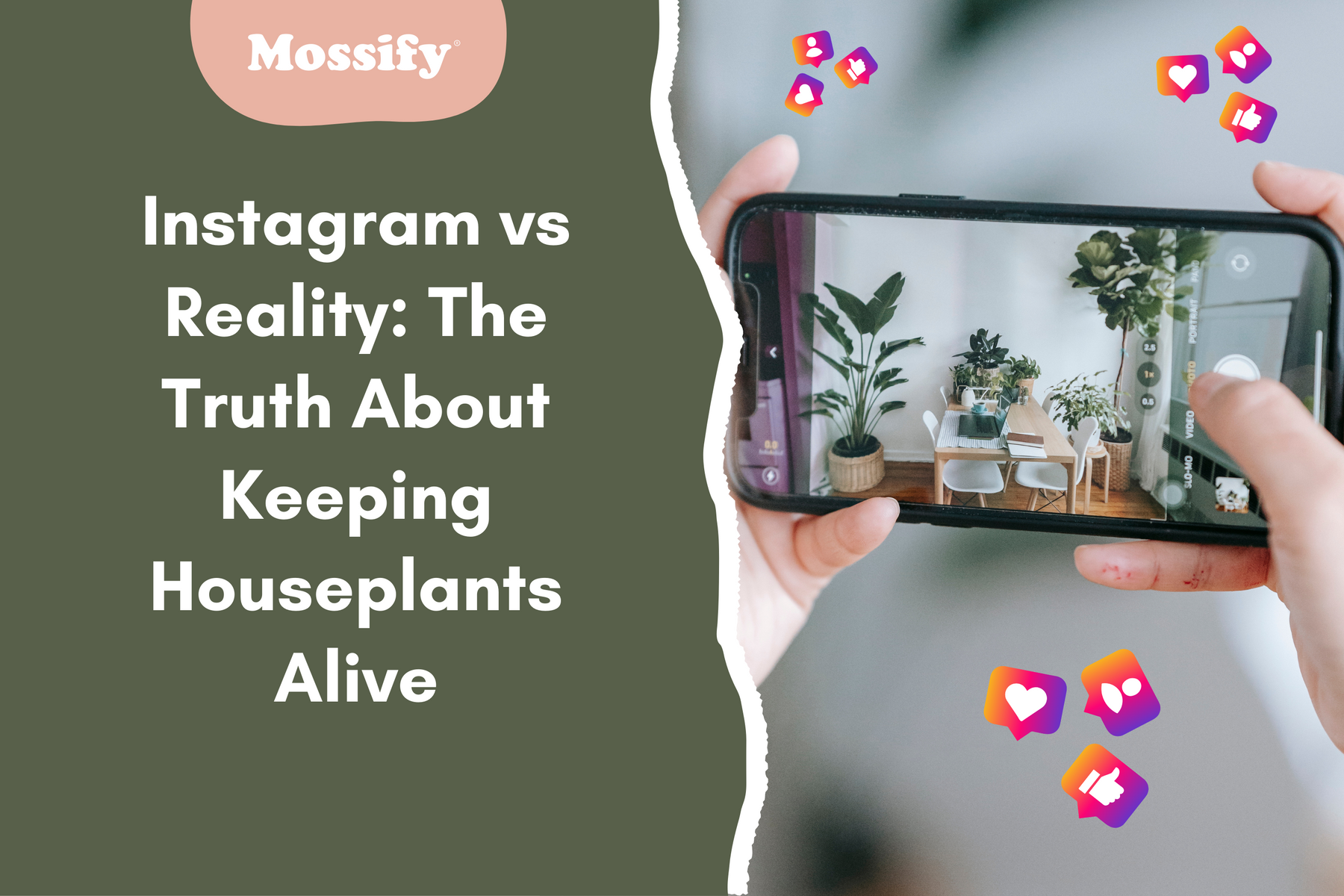With over 150,000 happy plants.
Over 150,000 happy plants

In the age of social media, it's easy to fall for the lush, perfectly styled greenery filling our Instagram, Facebook or TikTok feeds. Behind every perfectly positioned Monstera and impeccably lit succulent collection, there lies a reality often not shown. This reality involves trial and error, unexpected challenges, and a deeper understanding of what it truly takes to maintain a thriving indoor garden. This article aims to bridge the gap between the glossy, filtered world of Instagram houseplants and the real-life practices that can help you cultivate a healthy home full of green life.
Our journey into the realistic care of houseplants will cover essential aspects such as proper watering techniques, effective pest management, ideal lighting conditions, and the importance of temperature and humidity. By demystifying these key elements, we intend to equip you with the knowledge to not only keep your plants alive but to help them flourish. Let’s dive into these topics, offering practical advice and clear solutions to common problems faced by indoor gardeners.
💧 Watering Wisdom:
The overwatered, drooping leaves you rarely see on Instagram feeds are a testament to one of the most common misconceptions in houseplant care. Finding the right watering balance can feel like a secret recipe that only the greenest thumbs possess. In reality, it’s about understanding the unique needs of each plant. Some thrive on minimal water, while others require consistent moisture.
🐛 Pest Prevention and Treatment:

Pests can turn a thriving garden into a struggling one quickly, yet the solution isn’t always chemical. Early detection and regular maintenance can keep your plants healthy and pest-free. Key practices include inspecting plants during routine care, isolating new or affected plants to prevent the spread of pests, and opting for natural pesticides like neem oil.
💡 Lighting the Way:

The right lighting can dramatically affect your plant's health, mimicking their natural habitats as closely as possible. Not all areas of your home will be ideal for all plants, so understanding the specific light requirements of each plant is crucial. Tips for optimizing light include rotating plants for even exposure, repositioning them according to seasonal light changes, and supplementing with grow lights if natural light is insufficient.
🌡️ Temperature and Humidity Harmony:
Maintaining the ideal temperature and humidity can make your indoor gardening efforts more successful. Many houseplants require conditions that mimic their native environments, which often means warmer temperatures and higher humidity than typical indoor climates provide. Strategies to manage these conditions include avoiding placing plants near temperature extremes, using humidifiers or pebble trays to increase humidity, and routinely checking environmental conditions with a thermometer and hygrometer.
🪴 Soil and Repotting:

Soil isn't just dirt—it's the foundation of your plant's life. Choosing the right soil mix can mean the difference between a flourishing plant and one that struggles to survive. Different plants have unique needs, ranging from fast-draining sandy soils for succulents to richer, loamier soils for tropical plants. Repotting is equally crucial, offering a chance to refresh the nutrients your plant accesses and to inspect and treat any root issues.
🔋 Fertilization:
Fertilization is often overlooked in routine plant care, yet it's a vital component for the health and growth of your houseplants. Just as people need a balanced diet to thrive, plants require regular feeding to replenish nutrients depleted from the soil. However, there's a fine line between enough and too much.
🧤 Cleaning & Pruning:

Pruning isn’t just about maintaining a plant’s aesthetic; it's a vital health check that can encourage growth and flowering. Removing dead or overgrown branches and leaves allows your plants to focus their energy on producing new, healthy growth. Regular cleaning of your plant’s leaves is equally important for maximizing their ability to photosynthesize efficiently.
🌿 Plant Placement and Grouping:

The location of your houseplant can significantly affect its health and growth. Factors like light, temperature, and traffic in your home all play a role. Additionally, some plants benefit from being grouped together, which can help maintain a more consistent microenvironment around them, especially in terms of humidity.
By understanding these critical aspects of houseplant care, you can create an indoor garden that is both beautiful and healthy. Stay tuned as we delve deeper into each topic with more detailed solutions and tips in the following sections of this article. This will ensure your green friends not only survive but thrive, turning your home into a vibrant oasis that mirrors those Instagram-perfect plant scenes with a touch of reality.
Leave a comment